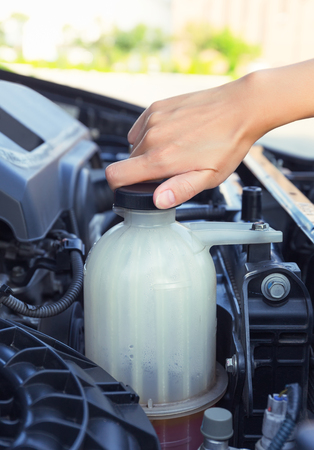Introduction to Water-Methanol Injection
Water-methanol injection is a performance-enhancing technology that’s been making waves in the automotive world, especially among enthusiasts and high-performance vehicle owners in the United States. At its core, this system injects a fine mist of water and methanol into the intake air or directly into the combustion chamber of an engine. While it may sound like something out of a science lab, water-methanol injection actually has roots dating back to World War II, where it was originally used in fighter aircraft to boost power during combat situations. Fast forward to today, and you’ll find this tech being used in everything from street-legal muscle cars to dedicated track machines. As modern engines become more powerful and efficient, managing heat and detonation becomes even more critical. Water-methanol injection is now seen as a practical solution for drivers who want extra horsepower without compromising reliability or risking engine damage. Its relevance continues to grow as American car culture evolves and demands both performance and durability from high-output engines.
2. How Water-Methanol Injection Works
Water-methanol injection is a proven method to enhance engine performance, especially in high-performance or forced induction applications like turbocharged and supercharged engines. To understand how this system works, let’s break down its components, the underlying science, and the step-by-step process that delivers its impressive benefits.
The Main Components of a Water-Methanol Injection System
| Component | Function |
|---|---|
| Reservoir | Holds the water-methanol mixture |
| Pump | Pressurizes and delivers the fluid to the injection point |
| Controller | Regulates when and how much mixture is injected, based on engine parameters |
| Nozzle | Atomizes and sprays the mixture into the intake stream or directly into the combustion chamber |
The Science Behind Water-Methanol Injection
The core idea is simple: injecting a fine mist of water and methanol into the intake air stream or combustion chamber cools the incoming air charge and suppresses detonation (knocking). Here’s how:
- The evaporation of water absorbs heat, lowering intake temperatures significantly.
- Methanol acts as an additional fuel with a high octane rating, helping prevent pre-ignition and knock.
This cooling effect means denser air enters the cylinders, allowing more fuel to be burned efficiently. Lower cylinder temperatures also protect engine components under heavy load or boost.
The Process: Step by Step
- As engine load increases (typically at higher boost or throttle), the controller activates the pump.
- The pressurized water-methanol mixture travels through lines toward the nozzle(s).
- The nozzle atomizes the mixture into a fine mist, injecting it into the intake manifold or charge pipe.
- The mist mixes with incoming air, cooling it before it enters the combustion chamber.
Summary of Benefits
- Cooler intake temps for increased power potential
- Reduced risk of detonation for safer high-performance operation
- Ability to run more aggressive ignition timing and higher boost levels without damaging the engine
This combination of hardware and chemistry makes water-methanol injection a game-changer for enthusiasts looking to push their engines safely while maximizing performance gains.

3. Performance Benefits for High-Performance Engines
When it comes to squeezing the most power out of a high-performance engine, water-methanol injection is a game-changer. This technology offers several key benefits that make it a favorite among American tuners and racers. First, it helps cool the intake charge, which means the air entering your engine is denser and contains more oxygen. This denser air allows for more fuel to be burned, resulting in increased horsepower and torque. Another huge advantage is its ability to prevent detonation, also known as “knock.” Detonation can cause serious engine damage, especially when running higher boost pressures or advanced ignition timing. Water-methanol injection raises the effective octane rating of your fuel, allowing you to push your setup harder without risking knock. This opens the door for more aggressive tuning, enabling you to run higher boost levels and leaner air/fuel mixtures safely. The end result is a stronger, more reliable engine with more power on tap—exactly what performance enthusiasts are after.
4. Water-Methanol Injection and Engine Longevity
One of the standout benefits of water-methanol injection in high-performance engines is its positive impact on engine longevity. By introducing a fine mist of water and methanol into the intake air, this system addresses several factors that typically contribute to engine wear and tear. The most significant advantage is in temperature control; when combustion temperatures soar under heavy load or boost, internal engine components are at greater risk for pre-ignition, detonation, and thermal stress. Water-methanol injection helps reduce these risks by lowering the intake charge temperature and preventing dangerous hot spots in the combustion chamber.
Beyond just controlling heat, this cooling effect also has a direct impact on reducing engine wear. High temperatures accelerate the breakdown of engine oil and can cause metal parts to expand beyond their design limits, leading to premature wear or even catastrophic failure. With water-methanol injection, those extreme peaks are smoothed out, promoting more consistent operation and longer-lasting parts. The methanol component not only cools but also acts as a secondary fuel, further supporting smoother combustion and lessening harsh pressure spikes inside the cylinder.
Key Benefits for Engine Longevity
| Benefit | Description |
|---|---|
| Reduced Combustion Temperatures | Prevents overheating, reduces knock, and lowers stress on pistons and valves. |
| Smoother Combustion | Methanol acts as a secondary fuel source, dampening pressure spikes and reducing engine shock loads. |
| Less Carbon Build-Up | The steam-cleaning effect minimizes deposits on intake valves and piston crowns. |
| Improved Lubricant Life | Lower operating temps mean slower oil degradation, extending oil change intervals. |
| Reduced Detonation Risk | Prevents destructive pre-ignition events that can damage pistons and rings. |
Real-World Impact on Durability
For American performance enthusiasts who push their vehicles at the track or during spirited street driving, these benefits translate directly into longer engine life and fewer costly repairs. Its not just about making more power—its about keeping your investment safe while enjoying the performance edge. Whether youre running a turbocharged Mustang or a modified Camaro, integrating a well-designed water-methanol injection system can be one of the smartest ways to safeguard your engines future without sacrificing excitement behind the wheel.
5. Potential Drawbacks and Considerations
While water-methanol injection offers impressive benefits for high-performance engines, it’s important to approach this technology with a balanced perspective. First off, installation and proper tuning are crucial—incorrect setup can lead to inconsistent performance or, in worst cases, engine damage. The system requires regular maintenance to ensure optimal function; injectors can clog, pumps may fail, and fluid reservoirs need to be refilled frequently. Additionally, using the wrong water-to-methanol ratio or low-quality fluids can corrode engine components or cause harmful deposits. There’s also a risk that drivers might rely too heavily on the system to compensate for other underlying engine issues, which is never a good idea. For street-driven vehicles, it’s worth noting that improper use could lead to emissions compliance concerns depending on local regulations. Ultimately, while water-methanol injection is a powerful tool for enthusiasts seeking more power and efficiency, it demands attention to detail, quality parts, and responsible usage to avoid costly mistakes.
6. Common Applications and Real-World Use Cases
Water-methanol injection has become a staple in American car culture, especially among enthusiasts who push the limits of high-performance engines. One of the most established scenarios for its use is in drag racing, where every ounce of power matters. Racers often turn to water-methanol systems to safely increase boost levels and horsepower while keeping engine temperatures under control. This technology is also widely adopted in street performance builds—think turbocharged Mustangs, Camaros, or Supras—where drivers want extra power for spirited driving without compromising engine reliability.
Beyond the track and street scene, water-methanol injection finds its place in truck pulling competitions and off-road racing. Here, engines are subjected to extreme loads and high intake temperatures, making the cooling and anti-knock benefits of water-methanol particularly valuable. Even diesel truck owners have embraced these systems to improve towing performance and fuel efficiency while mitigating the risk of detonation under heavy loads.
In the world of forced induction, whether it’s superchargers or turbos, water-methanol injection has proven to be a trusted solution for maximizing performance safely. American tuners often recommend these kits for vehicles running aftermarket boost setups, helping enthusiasts extract more power without resorting to expensive race fuels or risking engine damage. It’s not uncommon to see water-methanol injection discussed on forums, at car meets, and in shops across the U.S., highlighting its established role in the pursuit of reliable horsepower gains within American automotive culture.
7. Is Water-Methanol Injection Right for You?
Before you commit to installing a water-methanol injection system on your high-performance vehicle, its crucial to weigh a few key questions and considerations. First, think about how you use your car. Are you hitting the drag strip on weekends, tracking your ride, or just looking for some extra power for spirited street driving? Water-methanol systems shine in forced induction setups—like turbocharged or supercharged engines—where additional cooling and knock resistance can unlock serious gains. But if your engine is naturally aspirated or mostly stock, the benefits might not justify the investment.
Next, consider your comfort with maintenance and tuning. These systems require regular monitoring to ensure proper mixture ratios and fluid levels, plus they often work best when paired with custom ECU tuning to maximize performance and safety. If youre not comfortable wrenching under the hood or adjusting maps, you might want to factor in professional installation and tuning costs.
Your budget is another important factor. While entry-level kits can be affordable, high-quality systems with advanced controls, failsafes, and integrated tuning support can get pricey. Dont forget to account for ongoing costs like refilling the water-methanol reservoir and potential maintenance.
Finally, check local laws and emissions regulations. Some states have strict rules about modifications that affect emissions or involve chemicals like methanol. Always make sure any upgrade keeps your ride street-legal.
If youre chasing more power from a boosted setup, enjoy hands-on projects, and are prepared for a little extra maintenance, water-methanol injection could be an awesome upgrade. But if youre just looking for mild performance improvements or prefer a set-it-and-forget-it solution, you may want to explore other options.

